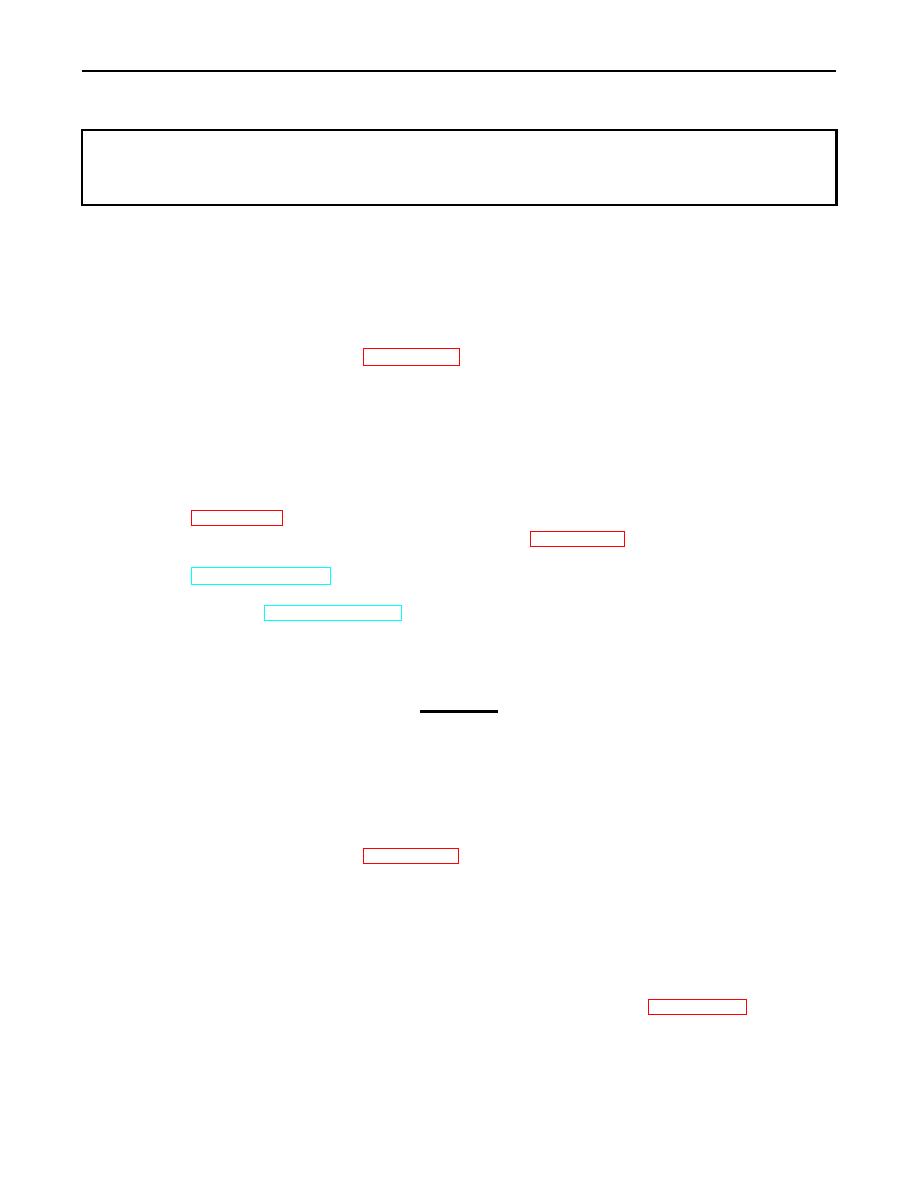 |
|||
|
|
|||
|
Page Title:
Unit Mechanical Troubleshooting - continued |
|
||
| ||||||||||
|
|
 TM 9-2320-386-24-1-1
0010 00
Unit Mechanical Troubleshooting (Contd)
MALFUNCTION
TEST OR INSPECTION
CORRECTIVE ACTION
13. EXCESSIVE FUEL CONSUMPTION
Step 1. Check for air cleaner indicator restrictions (malfunction 2, step 3).
Step 2. Inspect fuel lines, hoses, and connections for leaks and damage.
a. Tighten any loose connections.
b. If fuel lines, hoses, or connections are leaking or damaged, notify direct support
maintenance.
Step 3. Check maximum engine idle speed is set within specifications. If maximum engine idle
speed is incorrect, adjust (WP 0052 00).
END OF TESTING!
EXHAUST SYSTEM
14. EXHAUST COLOR BLUE DURING NORMAL OPERATION
NOTE
Blue exhaust indicates presence of excess engine oil in cylinder combustion space.
Step 1. Check that engine oil grade is correct for vehicle use and climatic conditions
If oil grade is incorrect, replace oil and oil filters (WP 0033 00).
Step 2. Check that engine fuel grade is correct for vehicle use and climatic conditions
(TM 9-2320-386-10).
a. If fuel grade is incorrect, drain complete fuel system and replace with correct grade
of fuel (TM 9-2320-386-10).
b. If problem persists, notify direct support maintenance.
END OF TESTING!
15. EXHAUST COLOR WHITE DURING NORMAL OPERATION AND IDLE
CAUTION
Thick white smoke indicates coolant is present in engine combustion
chambers during operation. When this condition is evident, shut engine
down immediately and determine cause. Continued engine operations
may result in permanent engine damage.
Step 1. Check engine temperature. Ensure engine temperature is at specified level.
If engine temperature is above operating level, perform malfunction 19.
Step 2. Check for presence of water in fuel. If water is present, drain fuel system and refill fuel
tanks. Replace fuel filter (WP 0054 00).
Step 3. If problem persists, notify direct support maintenance.
END OF TESTING!
16. EXCESSIVE EXHAUST NOISE
Step 1. Inspect turbocharger for secure mounting and exhaust leaks.
If turbocharger mountings are loose, notify direct support maintenance.
excessive rust. Replace exhaust pipes if cracked, broken, or rusted (WP 0066 00). Tighten if
loose.
Step 3. Inspect exhaust manifold for leaks. If leaking, notify direct support maintenance.
END OF TESTING!
|
|
Privacy Statement - Press Release - Copyright Information. - Contact Us |